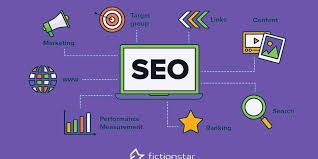Having SEO issues on your website can hurt your rankings, reduce traffic, and affect your business growth. But don’t worry! Identifying and fixing SEO problems isn’t as complicated as it seems. Here’s a step-by-step guide to get your website back on track.
1. Run an SEO Audit
An SEO audit is the first step in identifying issues. Use tools like Google Search Console, Ahrefs, or SEMrush to analyze your site’s performance. These tools help spot:
- Broken links
- Slow loading pages
- Missing meta descriptions and title tags
- Mobile-friendliness issues
🔍 Need expert help? Our SEO Services can audit and optimize your website for better rankings.
2. Fix Technical SEO Issues
Technical SEO ensures search engines can crawl and index your site properly. Some common fixes include:
- Improving page speed (Compress images, enable caching)
- Fixing broken links & 404 errors
- Ensuring mobile responsiveness
- Creating an XML sitemap & submitting it to Google

3. Optimize On-Page SEO
On-page SEO helps improve content visibility. Here’s what to optimize:
- Title tags & meta descriptions (Include keywords naturally)
- Header tags (H1, H2, H3) for better structure
- Internal linking to connect relevant pages
- Keyword usage (2-5% density) in a natural way
📌 Improve your website structure with our Website Development Services.
4. Improve Content Quality
Google loves high-quality, relevant, and engaging content. Ensure your content is:
- Unique and valuable to readers
- Optimized for keywords without keyword stuffing
- Includes images & videos to boost engagement
- Regularly updated to keep it fresh
✍ Need professional content? Our Content Writing Services can help!
5. Build High-Quality Backlinks
Backlinks from reputable sites improve domain authority. Gain backlinks by:
- Guest posting on industry blogs
- Listing your site on directories
- Creating shareable content
- Engaging with influencers
💡 Want to boost your online presence? Explore our Local SEO Services.
6. Monitor & Improve User Experience (UX)
A good UX keeps visitors engaged and reduces bounce rates. Improve:
- Navigation (Make it simple & intuitive)
- Page speed (Optimize for fast loading)
- Mobile-friendliness (Ensure a seamless experience on all devices)

7. Track SEO Performance
SEO isn’t a one-time fix; it’s an ongoing process. Use Google Analytics to track your site’s traffic, rankings, and user behavior. Adjust your strategies based on data insights.
🚀 Want expert SEO solutions? Contact Social Media Max today for a customized SEO strategy!
